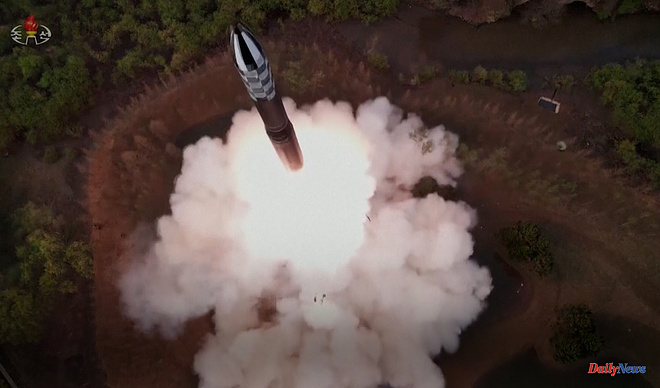It was in February, during the 75th anniversary of the North Korean military, that Kim Jong-un took out his best explosive toys for a walk through the streets of Pyongyang. A parade to show military muscle where the king of the party was the famous Hwasong-17, a powerful intercontinental ballistic missile (ICBM) with a range of up to 15,000 kilometers and capable of hitting the coasts of the United States loaded with a nuclear warhead . But astute analysts from neighboring South Korea realized that the parade was presenting what could be the mock-up of a new, more powerful missile, a new solid-fuel ICBM, more stable and agile than the fuel-fueled Hwasong-1. liquid, like the vast majority of large ballistic projectiles. If the latter were to become operational, specialists warned, it would give the Kim regime a more mobile and harder-to-detect nuclear missile.
A couple of months later, the new ICBM is not only already operational, but it has been the protagonist of the latest Pyongyang launch. The technical name it has received is Hwasong-18 and on Thursday it traveled 1,000 kilometers before falling into the waters of the Sea of Japan. Precisely, the news yesterday in the region was that the Japanese government activated evacuation alarms on its northern island of Hokkaido, because it believed that the missile could fall near the territory.
On Friday morning, along with confirmation that the missile launched the day before was the first airborne test of a solid-fuel ICBM, North Korean outlet KCNA published a photo shoot of leader Kim Jong-un with his family supervising the launch. Along with his wife and his sister, little Ju-ae, the daughter of the dictator and the latest media phenomenon of the regime, could not be missing.
Since it made its debut in the spotlight last November, when North Korean newspapers published a surreal photo shoot of a father and daughter walking hand in hand next to the 26-meter-tall Hwasong-17, the smallest, believed to be He is 11 years old, he has not stopped accompanying his father in all kinds of military events. For many of the analysts who have spent years studying every image that comes out of the hermetic North Korean regime, Ju-ae seems to be the one chosen to follow the saga of the Kims on the throne of Pyongyang.
The girl, together with her father, is once again the other protagonist of the images that accompany the launch of the Hwasong-18, a missile that, in Kim's own words, is intended to "make enemies suffer fear and anxiety." A message addressed to the United States, South Korea and Japan, the tripartite group of allied democracies that has been carrying out joint military exercises in the region all year in response to the ongoing North Korean threat.
"The Hwasong-18 will defend North Korea, suppress invasions and protect the nation's security," said Kim, who already warned at the end of last year, after the record number of missile launches, that this 2023 his country would develop a new type of ICBM much more stealthy. "We will strike with lethal force and respond aggressively until the enemy gives up his idle strategy and stupid behavior, and suffers endless fear," the leader said.
"The development of the new type of Hwasong-18 ICBM will comprehensively reform the components of strategic deterrence, radically promote the effectiveness of the nuclear counter-strike posture, and bring about a change in the practicality of the offensive military strategy," a KCNA note reads, adding that the purpose of the launch was to confirm "the performance of high-power solid fuel multistage engines, the separation technology of stages, and the reliability of control systems with different functions, as well as to assess the military capability and effectiveness of the new strategic weapons system.
From Washington they also pointed out that Pyongyang would carry out its seventh nuclear test this year, the first since 2017. In March, the North Korean army carried out tactical nuclear attack simulation exercises with a ballistic missile that, equipped with a simulated nuclear warhead, flew 800 kilometers before reaching a goal. Kim, who also oversaw that test, said the exercises improved the military's "true warfare capability" and stressed the need for his troops to prepare for any "immediate and overwhelming nuclear counterattack."
According to the criteria of The Trust Project












